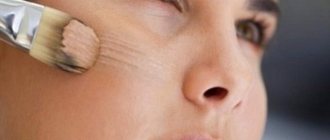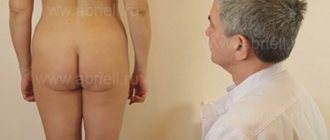Greetings! This article is about lengthening your legs naturally. This may be relevant for models for whom, due to their profession, it is important to have long legs. Also for people with closing growth plates, since the growth plates on the legs are the last to close. Many special exercises and techniques have already been invented to lengthen the legs. Here are 9 of the most famous ones.
In addition to the text version, watch the video with examples at the end of the article.
Kicking Jumping Interval running Inversion training Swimming Band stretching Weight stretching Riding with a raised saddle Stretching exercises
Bones grow under the influence of 2 types of exercises: “impact” and “stretching”. Do them together for better results. Let's start with the drums.
Impact training creates microdamage to the bones and irritates the growth plates on the legs. At the site of microdamage, new tissue is formed and the bones lengthen. And irritated growth zones also activate growth.
I included kicking, jumping and running as percussion. Next, we will briefly look at them individually.
Kicks
Suitable strikes include punching the punching bag, the opponent, or the air.
Two types of strikes work well: strikes with the instep of the foot and the base of the foot.
. Foot strikes are strikes with the portion of the leg from the ankle to the toes. In taekwondo, such a blow is called “dolyo chagi.” Heel kicks are horizontal or vertical kicks with the heel of the foot. Do both. Aim at different points: the head, torso or legs.
Beat for 10-15 minutes at a fast pace daily or every other day.
Visual way to lengthen legs
Rules for selecting clothing for existing problems with the length of the lower extremities:
- Choose shoes with high, stable heels (if there are no contraindications). The optimal shoe height is 7 cm. You cannot overload the leg muscles for a long time in order to avoid varicose veins and the growth of bunions on the big toe.
- In winter, you need to wear boots with high or medium tops made of natural materials.
- Skirt length – mini.
- Avoid wearing low-waisted dresses or jeans that sit high on the hips.
- Pants preference:
- knee flare;
- classic;
- samples with striped colors.
- Avoid contrasting colors in wardrobe items and large jewelry.
- Clothes must be selected in the same color scheme.
- Sandals in the summer - white or beige tones, without ties on the shins.
Jumping
Next in line are the jumps. They also make the legs grow by creating microcracks and irritating the growth zones. I offer 3 options for jumping.
Jump rope
One of the most affordable growth trainers.
Jump rope for 5-10 minutes at an intense pace every day or every other day.
Plyometrics
In addition to jump rope, consider plyometrics, which are specialized jumping workouts. Jumping jacks or high jumps are the right choices. This is more difficult than jumping rope, but the effect is also greater. Try to devote some time to plyometrics.
Trampoline
The third way to jump is to buy yourself a home trampoline or go to trampoline clubs. Unlike the first two methods, you can jump on a trampoline for hours. It's easy and very attractive for children. There will also be an effect on growth if you jump for 20–30 minutes every day or every other day.
Mahi
We wave our legs in different directions. First forward - backward, then right - left. Stop, swing forward, hold it as high as possible, and slowly lower it. We make a similar movement with a delay back. We perform static extension swings.
Then we intensively kick the imaginary ball, stretching out the toe, alternating with an imaginary hanging bag, and also try to kick. It is permissible to use a real pillow or pear, adapting it conveniently. Such swings are called “karate swings” and have a beneficial effect on increasing height.
Interval running
Closes the list of running activities. In principle, walking is also suitable, but during running the load on the bones is several times greater. For our purpose, running is preferable. The greater the load, the more irritated the bones.
Interval running or running with acceleration has proven itself to be excellent. The idea is to alternate moderate running with sprints.
. For example, run for 20 seconds at an easy pace and 10 seconds at a fast pace. Alternate and continue for 5-10 minutes. Exercise a couple of times a week.
We are done with impact exercises and move on to stretching exercises. Stretching ones will enhance the percussion effect. In other words, if the leg bones are first damaged and then stretched, expect a synergistic effect.
I included inversions, stretching with bands and weights, as well as cycling with a raised saddle, swimming pool, and stretching exercises. Let's go in order.
Contraindications to special exercises
You should not exercise on exercise machines or with a load if you have the following conditions:
- glaucoma;
- heart diseases;
- hernias;
- prosthetic joints;
- cerebral aneurysm;
- diseases of the nervous system;
- pregnancy;
- recent operations, injuries.
There are many ways to lengthen your legs, but before you start, you should consult a doctor to avoid complications.
Swimming
The force of gravity, which constantly attracts the earth on land, is reduced in water. This makes it easier for the body to grow. In addition, in the water you will have to stretch more often, including pulling your legs, to stay afloat and not drown.
To increase height, 2 types of swimming are more effective: crawl and back crawl.
. However, they require a lot of strength, so you won’t be able to swim for a long time. At least at first. In between crawl approaches, use breaststroke or something else. For example, change 20 seconds of freestyle crawl to 40 seconds of breaststroke and vice versa.
Frequency: at least 3 times a week for 30-60 minutes.
Walking on your toes
Restore your breathing and stand on your toes with your back straight. Keep your chin parallel to the floor. You need to start walking, trying to stretch your fingertips as much as possible, with a “doe’s gait.” For the best results of the exercise, place a book or tray on the top of your head.
The task is to hold the object on your head while walking, keeping your back straight. Persian beauties performed the exercise daily with grace and ease, carrying jugs of wine and trays of fruit on their heads.
Stretching with weights
A fourth leg stretching technique—an old and well-respected one—is sitting with weights. The mechanism of operation is similar to tourniquets, that is, the legs are constantly stretched and become longer over time.
To sit with weights, you need a high chair or table so that your feet do not touch the floor. Weights here range from 1 kg and more. Put on weights, sit down and sit for 30-60 minutes every day.
Try alternating this technique with tourniquets: for example, stretch with tourniquets one day, and weights the other day.
Exercises with weights
This type of load is considered the main one for “stretching” growth. Sit on a high chair or table, first putting weights on both ankles. Legs with a load hang down without touching the floor. Make sure the table or chair is stable. It will take at least 30 minutes to sit in this position, or an hour if you have the patience. You need to start the exercises with two kilograms of weight, gradually adding. It is important not to weigh more than five, but weights that are too light will be in vain.
Sports stores sell them ready-made, easy to make yourself. Sew stones into the pockets of the bag, use plastic bottles with water and sand. Order online. The main thing is that the weight on both ankles is shown to be the same. The changes will be uniform on both sides.
Weights for exercises
While the body has not cooled down after an intense run, we hang the weight on our legs and begin to hang out. Weights are not intended to compress the lower leg, interfering with normal blood circulation. It is necessary to move your knees slightly away from the edge of the chair; large vessels pass behind the knee joint. While sitting, lengthening and intensive healing of the formed microcracks in the bone tissue occurs. The damage is filled with new cells, the cracks heal, and new tissue forms. If you take a rest after a long run and do not continue training to increase the length of your legs, you will not notice any changes. The size will remain the same.
The training time is unlimited, it directly depends on patience. After starting exercise, a tingling and burning sensation is felt in the muscles. There should be no severe pain. If you perform “dangling” every day, the lower leg will stretch by 2-4 centimeters - not as little as it seems. It is recommended to do extension hangs with weights on the crossbar or horizontal bar. The spine and hip bones are stretched.
Many people believe that increasing the load with heavier weights will cause quick results. Erroneous judgment. Overextended muscles hurt a lot, causing aches and discomfort at the slightest movement. Bursted blood vessels discourage the desire to continue training without becoming longer. Practice without fanaticism.
Stretching exercises
Stretching exercises are needed more to stretch the muscles, not the bones. Which is also important, since relaxed and stretched muscles allow bones to grow unhindered.
As an example, I will give splits and yoga asanas.
for legs. Hold each exercise for 30–60 seconds. You can sit on the splits for longer. It is advisable to repeat it daily or several times a week.
Watch video on YouTube
That's all the leg lengthening exercises for today. In conclusion, I will say 2 things.
1. Consult your doctors. The mentioned exercises are not always allowed to be performed in case of health problems.
2. Create an individual schedule for yourself. As you noticed, I always advised exercising every day or every other day. But this does not mean that everything needs to be done at once. Vary your exercises. Gradually increase the load. Rest when necessary.
Thank you for your attention. I wish you success!
Best regards, Vadim Dmitriev
Operable lengthening
Indications for surgical intervention:
- shortening of one or both limbs after a fracture;
- congenital malformations (dysplasia);
- inability to walk independently;
- different leg lengths;
- plastic surgery if a person wants to increase his height.
Operation stages
The intervention is a dangerous and painful procedure due to the high risk of complications and the length of the rehabilitation period.
The method is based on the use of Ilizarov's construction. Before the operation, the patient undergoes a general blood and urine test, an ECG, and consults with specialists and a therapist.
For 14 days, you should stop taking blood thinning medications, smoking and alcoholic beverages, and you should not eat food on the day of the intervention.
Lengthening is carried out in a hospital setting under general anesthesia using a device for external and internal fixation. For stretching purposes, the doctor makes a medical fracture of the femur or a dissection of the tibia and fibula.
The operation consists of several phases:
- Dissection of bone tissue and application of the Ilizarov apparatus.
- Gradual enlargement of the limb. Stretching begins 7 days after the osteotomy. The speed depends on the patient’s age and individual characteristics. The average growth of bone tissue is 1 mm per day.
- Fixation is the time at which ossification of the obtained result occurs. This phase can last from six months to 18 months.
Structure of the lower leg
Anatomical structure of the ankle
So, the lower leg is an intermediate formation, which consists of the following structures:
- Tibia. A tubular bone that has two growth zones located slightly central to the diaphyses. The diaphysis is the extension of the bone at one end. The joint, ligaments, and periarticular bursae are usually attached to it. The diaphysis is covered with cartilage tissue, which ensures reliable attachment of the ligamentous-articular apparatus to the bone.
- The fibula is also tubular, but of smaller diameter. It is located lateral to the tibia. This bone also has two growth zones near the diaphysis and a large number of ligaments.
- Knee-joint. A complex articulation that consists of the articular surfaces of three bones. It is a mistake to think that stretching it will lead to lengthening of the legs. Constant mechanical stretching of the knee joint ligaments will only lead to habitual instability.
- Ankle joint. Its basis is the talus bone, on which the ankles of the tibia and fibula rest.
- The calf muscles are one of the anatomical structures whose length is easiest to change. About a million exercises have already been invented and developed for stretching, pumping and shaping the muscles of the lower leg.
- Ligaments and tendons are dense, hard-to-change structures that hold bones and muscles together. It is possible to stretch ligaments at home and in the gym, but this requires a little more time than working with muscles.
How long does it take to lengthen by 10 cm?
The torment does not end at the end of the distraction:
- The Ilizarov apparatus will have to be removed (the procedure is also not pleasant).
- Next comes long-term (up to 4 months) immobilization: the leg is placed in a cast or splint;
- I have to walk on crutches for a long time.
- After the cast is removed, the main stage of rehabilitation begins with complex exercises for several months.
Calculate how much time it will take, including rehabilitation, to lengthen one leg if you decide to grow from 165 to the coveted 175 cm - this is clearly more than a year!
- With the first, intraosseous method, the period of fixation of the elongated limb is shorter, but this requires another operation to remove the rod from the bone, and again with subsequent immobilization and development.
- Leg lengthening is best done in two stages, although on the other hand, a one-stage operation is preferable in achieving ideal symmetry and equal length of both limbs.
But if you break two legs at once:
- possible great shock and painful shock for the patient;
- rehabilitation is much more difficult;
- even with simultaneous lengthening, the apparatus is removed in stages: first from one leg, then from the other;
- the promised two-week period between stages could drag on for a long time if something goes wrong.
As you can see, it is not possible to grow up easily, quickly and without suffering: lengthening both legs by 10 cm with distraction, fixation and rehabilitation can take up to two years or more.
Such a long period is explained by the fact that the bones at the site of fusion are very vulnerable and can break or bend as a result of stress.
Finally, the device has been completely removed from my feet!
How to surgically lengthen legs
Leg lengthening without surgery does not always achieve the desired effect. In this regard, the possibilities of modern medicine will be almost limitless. So, how do you surgically lengthen your legs?
- Using the Ilizarov apparatus, existing leg bones are broken and put back together, building new joints.
- This is a long process that will take about six months, plus the same amount of time will be spent on rehabilitation.
- Growing bones occurs under the influence of physical activity, using physiotherapy and developing joints.
- Hardware leg lengthening is an expensive and very painful procedure. There is a risk of disruption of the entire musculoskeletal system.
Surgery is a radical solution and is usually used to correct defects and injuries.
Yet this method is mainly created to correct orthopedic defects and complex injuries. It is especially indispensable for open fractures of the limbs in various places.
The best alternative to such an operation would be women's tricks with visual deception and correctly selected clothes.
If you want something more, you can always take an x-ray of your dominant hand and find out whether growth of your bones is still possible. If yes, specific exercises and hormonal diets will help you. But only after consultation with a medical specialist.
Psychological aspects
It is not for nothing that mental disorders are mentioned as contraindications to leg lengthening surgery.
Today, surgeons, of course, strive to satisfy any whim for your money, correcting those flaws in appearance that, according to patients, interfere with their lives. But in fact there is another problem here, much more serious.
Psychologists see disorders in the desire to achieve a perfect appearance at any cost...
- Complexity, terrible uncertainty about one's appearance, a fanatical desire to change one's outer shell at any cost, receiving in return, perhaps, injury - this is dysmorphophobia, a mental illness (usually in adolescence, but not always).
- In addition to complexes, women may have a manic goal to be like someone: a Barbie doll, a favorite actress or model, etc.
- Another type of such illness: the desire to remake oneself into some single fashionable (in its concept) image. Usually, these people don’t stop at one operation: today the nose is redone, tomorrow – the lips, the day after tomorrow silicone is inserted into the chest, then the “extra” ribs are removed, etc.
It is interesting that such metamorphoses can even disfigure a woman, but she, without noticing it, is completely delighted with her new appearance.
Such people would not go to a surgeon, but to completely different doctors.
Osteosynthesis and osteotomy
All lengthening operations are based on osteosynthesis - the properties of bone cells to divide.
Attention: Osteosynthesis is preceded by an osteotomy - an intersection (fracture) of a bone, that is, before adding a couple of centimeters to your legs, they will first be drilled out with a drill, and then, roughly speaking, they will simply be broken.
For the impressionable, of course, it’s better not to see this.
The operation is performed using the method of osteotomy - leg fracture
And then the osteosynthesis itself will begin - the long process of bone healing (after a fracture) with all the accompanying:
- scarring, adhesions, incomplete fusion;
- muscle contractures;
- postoperative pain;
- long-lasting wounds on the skin, etc.
To find out what people typically experience during this time, talk to those who have had tragic experiences with trauma.
Healing during limb lengthening is burdened by the need for daily distraction, and therefore takes much longer than with a normal fracture
What clothes should not be worn by those with short legs?
In an attempt to achieve the ideal, many girls often make mistakes when choosing a particular item of clothing. There are several tips that will help you avoid mistakes in the future when choosing clothes:
- If you have a squat, dense figure, avoid contrasting color combinations and horizontal lines in clothes. This applies not only to the horizontal strip, but also to structural details.
- Avoid long skirts. They visually shorten the silhouette.
- Say no! boots, they have no place in your wardrobe.
- It is advisable not to choose shoes with heels greater than seven centimeters. Otherwise, it may be uncomfortable to wear. An awkward gait and a stooped figure will ruin the whole impression.
- Avoid pointy shoes.
Straight posture, daily exercise and the right clothes will help you appear taller and slimmer without harming your health. All these techniques are quite simple, and every girl can apply them in life.



